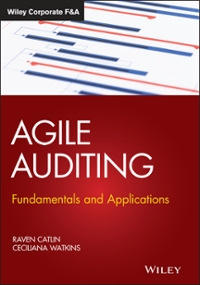Answered step by step
Verified Expert Solution
Question
1 Approved Answer
Foster Corporation uses a standard cost system. There is no beginning or ending work in process, and finished goods inventory balances. The following information was
| Foster Corporation uses a standard cost system. There is no beginning or ending work in process, and finished goods inventory balances. | ||||||
| The following information was provided concerning the one product produced by this company for the period that just ended: | ||||||
| This company used Direct labor hours as the cost driver for the application of overhead. | ||||||
| Actual price per kilogram | $2.94 | |||||
| Actual kilograms of material used | 31,500 | |||||
| Actual kilograms of material purchased | 32,000 | |||||
| Actual hourly labor rate | $17.49 | |||||
| Actual hours of production | 4,900 | labor hrs. | ||||
| Standard price per kilogram | $2.96 | |||||
| Standard kilograms per completed unit | 6 | |||||
| Standard hourly labor rate | $17.90 | |||||
| Standard time per completed unit | 1 | Hour | ||||
| Actual Variable factory overhead | $17,395.00 | |||||
| Actual Fixed factory overhead | $18,200.00 | |||||
| Standard fixed factory overhead rate | $3.25 | per labor hour | ||||
| Standard variable factory overhead rate | $3.80 | per labor hour | ||||
| Budgeted fixed overhead | $18,300.00 | |||||
| Units completed during the period | 4,950 | |||||
| You have just been hired by a local plastic pool manufacturer to determine if they are controlling their costs. | ||||||
| You have decided to use your recent knowledge of variance analysis from chapters 10 and 11 to assist you in this endeavor. | ||||||
| You will analyze the variances as stated in the requirements below. | ||||||
| Required: Make sure you do not forget to label the variances U or F. | ||||||
| 1. Calculate the direct materials price and quantity variance. | ||||||
| Direct-material purchase price variance should be based on material purchased, since you want to isolate the variance as soon as possible. See bottom page 418 | ||||||
| Direct-material Quantity variance should be based on materials used, since this is monitoring the production efficiency. See top of page 418. | ||||||
| Direct-material purchase price variance | ||||||
| Direct Material Quantity variance | ||||||
| 2. Calculate the direct labor rate and efficiency variances. | ||||||
| Direct Labor rate variance | ||||||
| Direct Labor Efficiency variance | ||||||
| 3. Variable manufacturing overhead spending and efficiency variances. | ||||||
| Variable overhead spending variance | ||||||
| Variable overhead efficiency variance | ||||||
| 4. Fixed manufacturing overhead spending and volume variances. | ||||||
| Fixed Manufacturing overhead spending variance | ||||||
| Fixed overhead volume variance | ||||||
| 5. Pick out the one most significant variance that you computed above and explain to me the possible causes of this variance and why you chose it. | ||||||
Step by Step Solution
There are 3 Steps involved in it
Step: 1

Get Instant Access to Expert-Tailored Solutions
See step-by-step solutions with expert insights and AI powered tools for academic success
Step: 2

Step: 3

Ace Your Homework with AI
Get the answers you need in no time with our AI-driven, step-by-step assistance
Get Started


